Interview with Jeff Danos, Director of the Eureka Springs Historical Museum
Jeff Danos is Director of Operations at the Eureka Springs Historical Museum. He brings to that position extensive success as a visual artist and musician, creative designer, events coordinator, and what he describes as a love of historical mysteries. ESH Museum, a non-profit welcoming donations, is clearly lucky to have snagged him, especially as the museum is being revitalized with plans to expand.

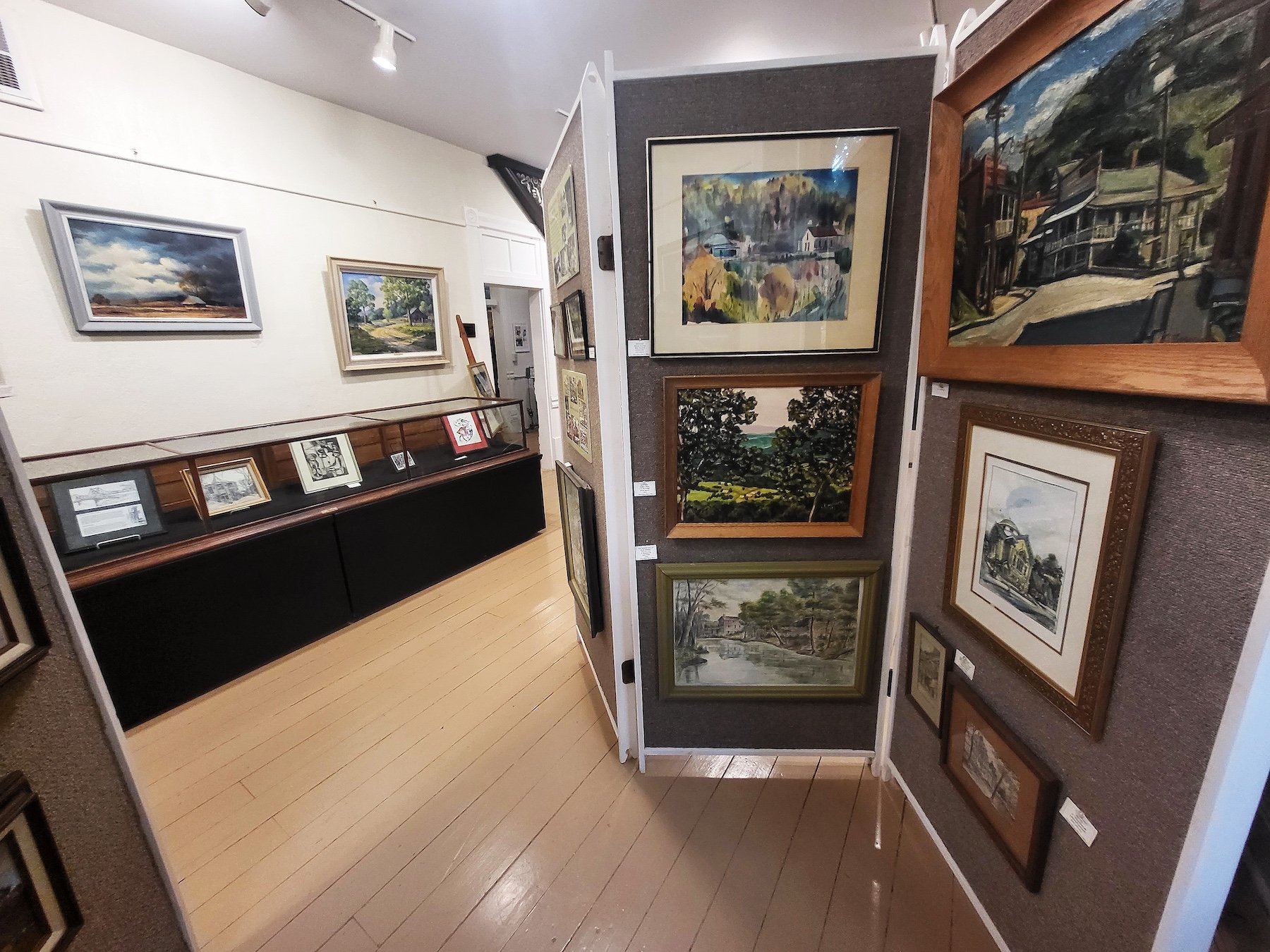

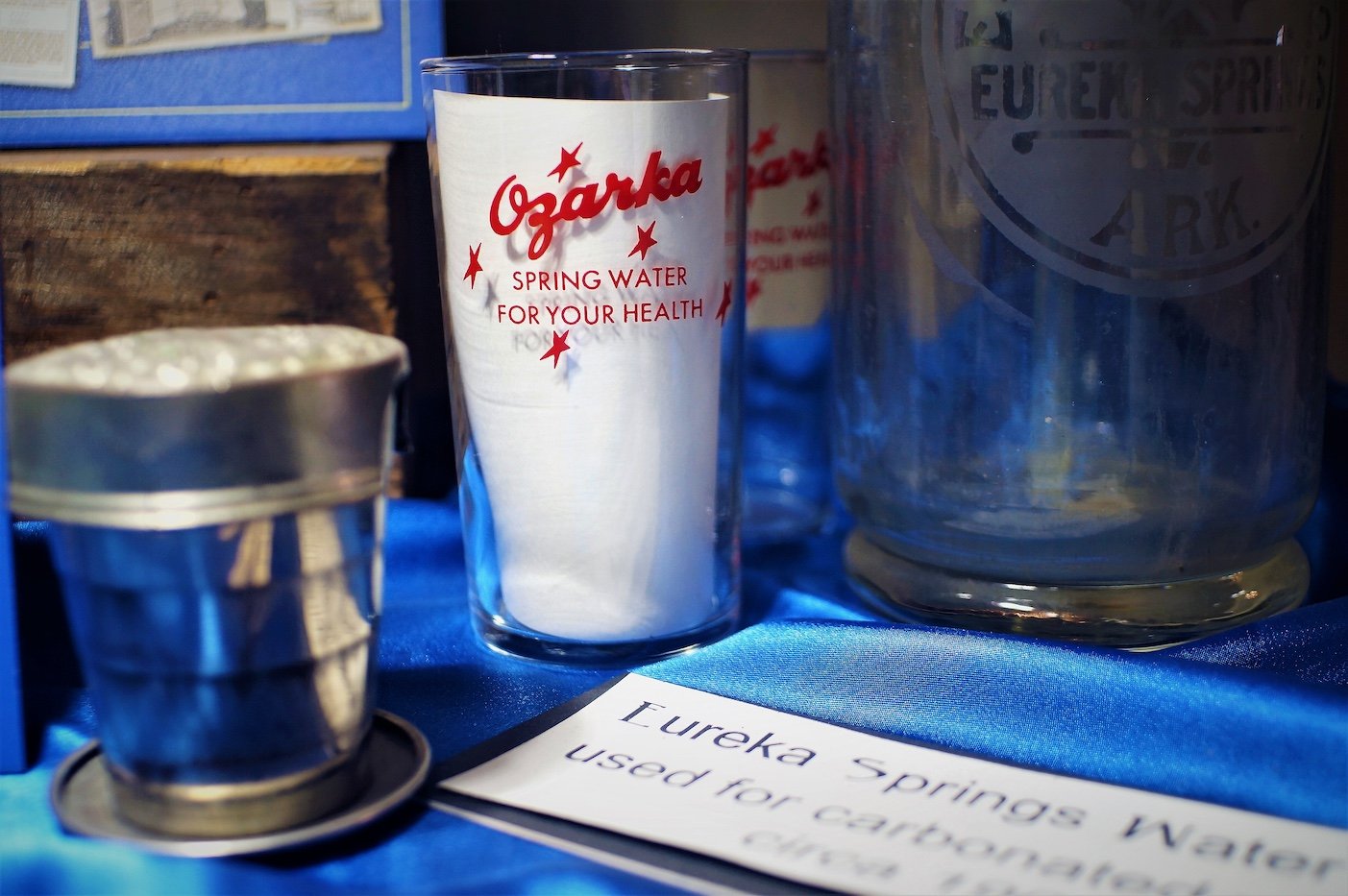
AAS: Jeff are you originally from Arkansas?
JD: We moved to Arkansas in 2006 from Colorado. My wife and I met there in college, where we were both pursuing fine arts degrees. I was working as a freelance graphic designer while in school, but ended up picking up a job as an engineer with the phone company. After graduating, they relocated us to Omaha, and I spent several years as a field engineer, visiting every little town in Nebraska and Iowa that had a telephone office. This gave us a glimpse of small-town life, which we thought might be a nice change. After moving back to Colorado, we lived near the “Wet Mountains” southwest of Pueblo for a while, trying to find a small town that felt like home. But it was a trip to the Ozarks that introduced us to Eureka Springs, and we found it to be the perfect mix of small-town charm with offbeat arts and culture.
AAS: How did you become the Eureka Springs Historical Museum Director?
JD: After moving to Eureka Springs, I started my own digital design firm, but slowly found myself gravitating away from strictly 2D design and web work and moving into audiovisuals, soundtrack work, and more immersive event production. I have been an electronic musician for nearly thirty years, producing music under the alias Testube, and I have always enjoyed creating unique experiences of sights and sound. My albums always included my own custom artwork and often unique packaging.
In 2012, my wife and I started the annual Eureka Springs Zombie Crawl, a Halloween themed festival and canned food drive that grew to become the single largest spectacle in town, drawing up to 20,000 people annually. We followed up with a Star Wars fan convention, retro sock hop, a summer series of alternative music acts booked in the allegedly “haunted” underground level of the City Auditorium, and a group of carefully curated DJ tributes to popular music acts like David Bowie, Prince, and The Beatles. By 2018, I had firmly established myself as an event producer, content creator, and/or deejay involved in many local themed events, including the Mad Hatter Ball, Black Light Ball, Witches Escape, Joker’s Masquerade Ball, Spring and Summer Diversity in the Basin Park, Swing and Salsa Nights, and the Clear Spring Fling.
Alas, this all came to a halt with the spread of the coronavirus in 2019, when I discovered that all of the large gatherings that I depended on for my livelihood were suspended. It was at this time that I was forced to find inspiration in a new field of study. Luckily, my time spent as a creative content creator, fundraising event planner, and amateur historian helped me to land my current role as Director of the Eureka Springs Historical Museum. Although unexpected, this new career has been a truly rewarding experience and I get to make use of my many different skills. I feel like I am making a difference in our community, and that I am where I am supposed to be. I often joke that it only took 45 years to figure out what I want to do when I grow up.
Jeff wrote and produced the music for America’s Most Haunted Hotel – The Crescent Hotel in Eureka Springs, a short commercial film by White Phoenix Films.
AAS: How and when was the museum founded?
Calif House is home to the Eureka Springs Historical Museum in Eureka Springs, Arkansas
JD: The Eureka Springs Historical Museum was originally founded in 1971 by our local Ozark Folk Festival organization. They purchased the historic Calif House from the Elks Club, who had been using it as their lodge. Over the next two decades, considerable effort and expense went into restoring the building to its original historic appearance, and a non-profit organization was established to run the museum. Today, the museum still operates as an independent non-profit. Since we are not owned or operated by the City of Eureka Springs, we rely on admissions, fundraisers, membership, gift shop sales, and donations to maintain our facilities and collections.
AAS: Tell us a bit about your historic facilities.
JD: The Calif House was built in 1889 by Samuel and Lucy Calif, wealthy farm owners from Illinois who relocated to Eureka Springs for their health. The large 3-story limestone structure is a rare surviving example of “High Victorian” architecture featuring stone quoins, ornate gingerbread trim, and a copper-tiled mansard roof. Initially, the Calif family operated a dry goods store in the building and lived on site, while also renting out rooms on the second and third floors. Mr. Calif passed away after about ten years, and the building changed hands several times, serving as a grocery store, hardware store, and apartment building before it was purchased by the Elks in 1948. The building was used by the Elks as their nightclub and lodge until 1971 when it was sold to the Eureka Springs Ozark Folk Festival. There is also a historic spring and pocket park beside the building that is maintained by the City of Eureka Springs Parks Department.
AAS: What exhibits can visitors expect to see at the museum?
JD: On our first floor, we showcase the history of the springs and our community, from the indigenous people who once hunted these lands to the early pioneers who tamed the wilderness. We have exhibits that illustrate the different springs throughout town that were believed to have had healing properties, and we share the ups and downs experienced by its inhabitants, from the boom times at the turn of the 19th century and the devastating fires that reduced many of the early structures to smoldering rubble, to the development of Eureka Springs into a world-renowned Victorian health spa resort and later, the counter-culture “city where misfits fit”.
Our first floor also features our temporary exhibit space, which we rotate several times per year. We are about to install a new exhibit in that space celebrating the annual Ozark Mountain Folk Festival that started in 1948, and is believed to be the oldest continually running festival of its kind in the country. We have a museum gift shop, where we sell local art and crafts, and have an extensive collection of regional history books for sale. We also have an “Artist of the Month” program in which we feature a local artist’s work in the gift shop, and host them for a special meet and greet.
Original Glenn Swedlun studio sign and Ken Addington painting (at right) of Miriam McKinnie
Most of our second floor is dedicated to our local art gallery, featuring stunning originals from Eureka Springs artists and the fully restored Carry A Nation mural that spans three walls, which was painted by Louis Freund in 1940. The second floor also includes a Pioneer Room with period furniture, experimental medical devices and doctor’s instruments from the turn of the century, and exhibits detailing the history of our local educational system and the Crescent College for Women.
Louis-Freund-mural – part of the restored Carry A Nation mural painted by Louis Freund, on display in 2nd floor art gallery
AAS: What kinds of art are on display at the museum, and who are some of the artists featured in your collection?
JD: We are proud to have an extensive collection of art from legacy artists working in many different mediums, all of whom have called Eureka Springs home at one point in time. Our collection includes fine landscapes by father-and-son master painters Fred and Glenn Swedlun, murals, sketches, and paintings by Louis Freund, stunning jewelry and watercolors by Elsie Freund, early photographs and stereoscopic images by Lucien Gray, midcentury paintings and lithographs by Miriam McKinnie, unique Ozark swirl pottery by Charles Stehm, plus original works by Frank Weatherell, Mary Sims, Hal Mallett, Tommy Thomas, Drew and Mary Gentle, Gary Eagan, Lester Exley, Julie Kahn Valentine, Ken Addington, Don Kennett, Mary Jane Beggs, Glen Gant, and others.
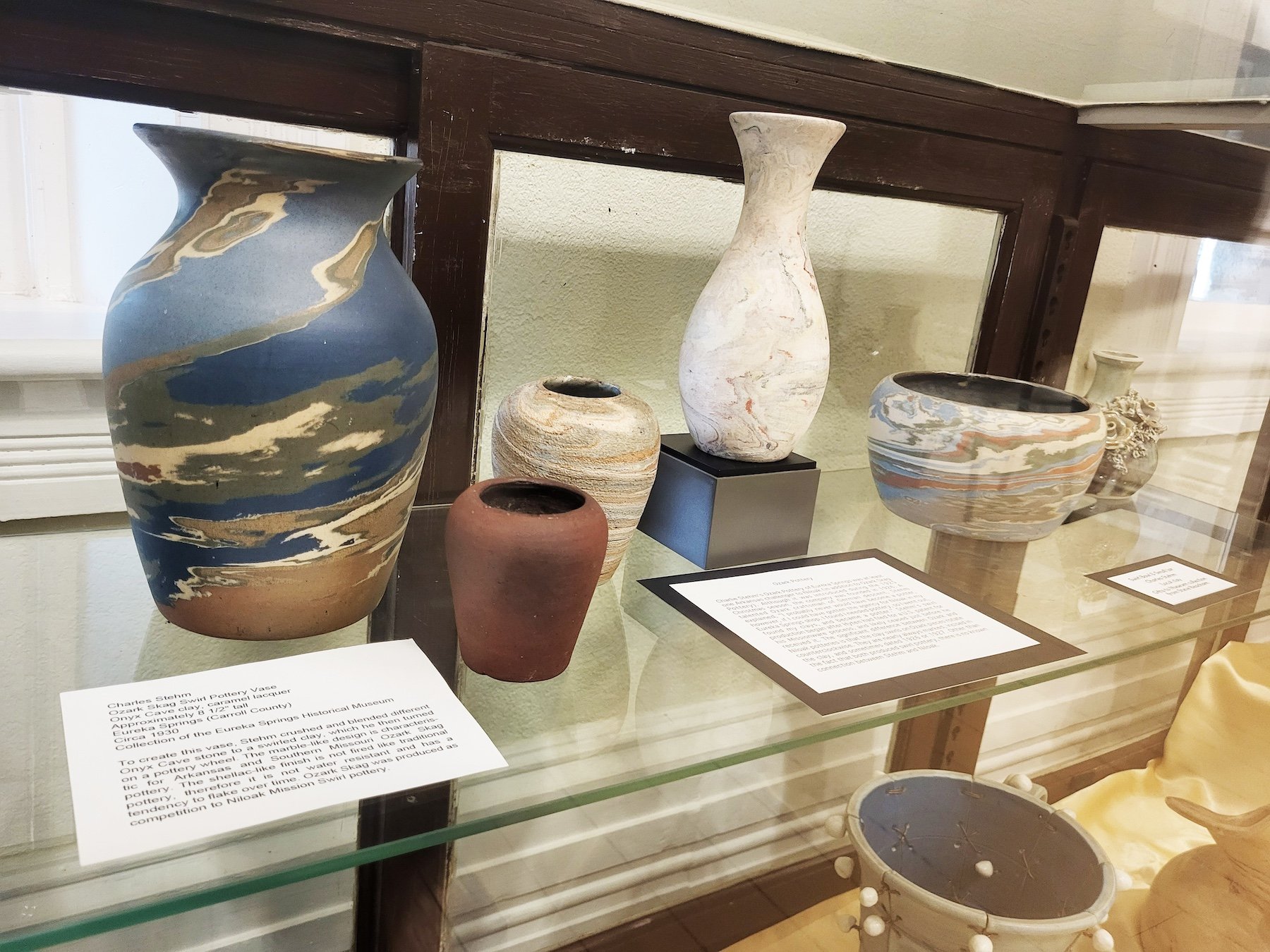
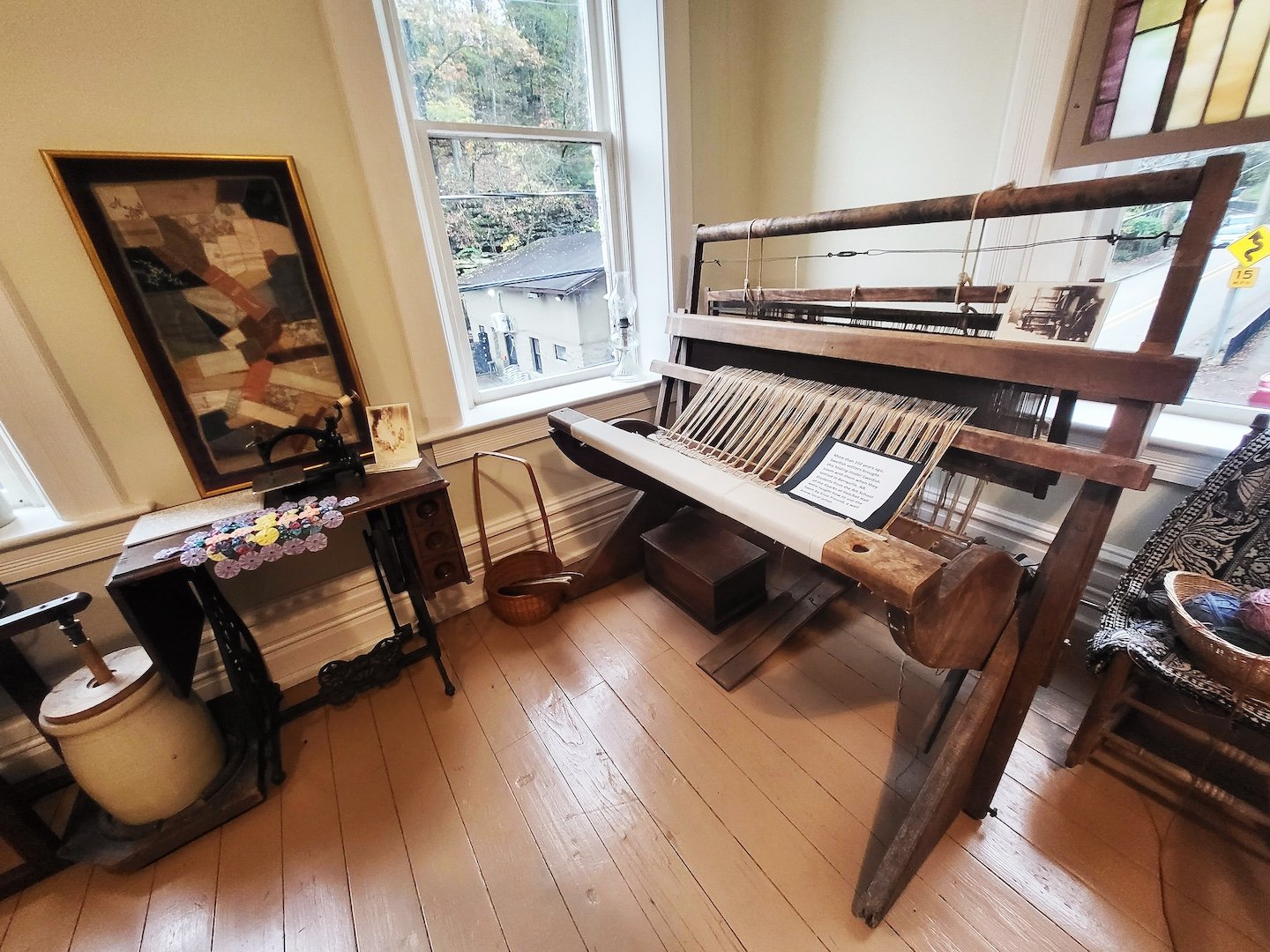
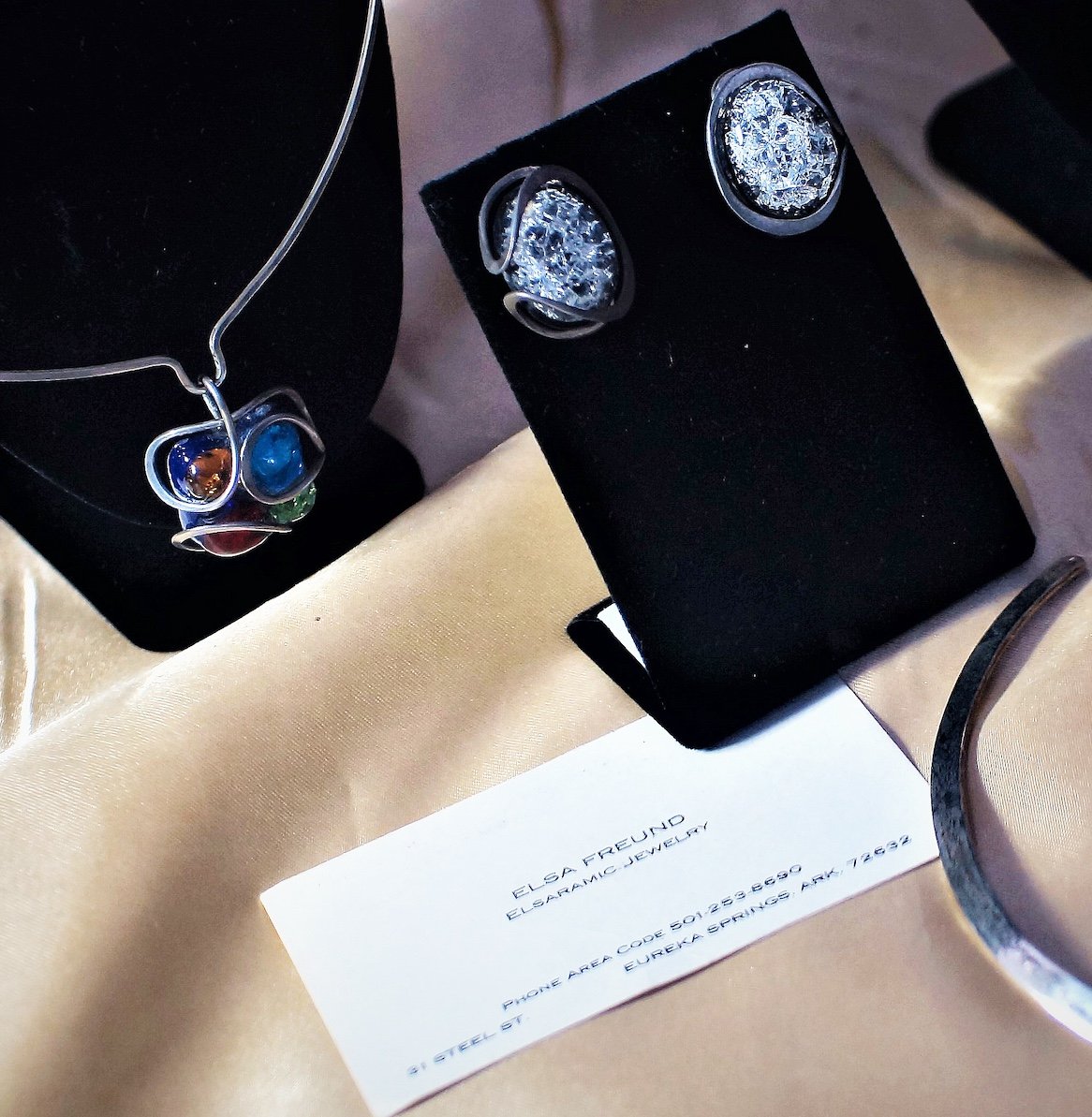
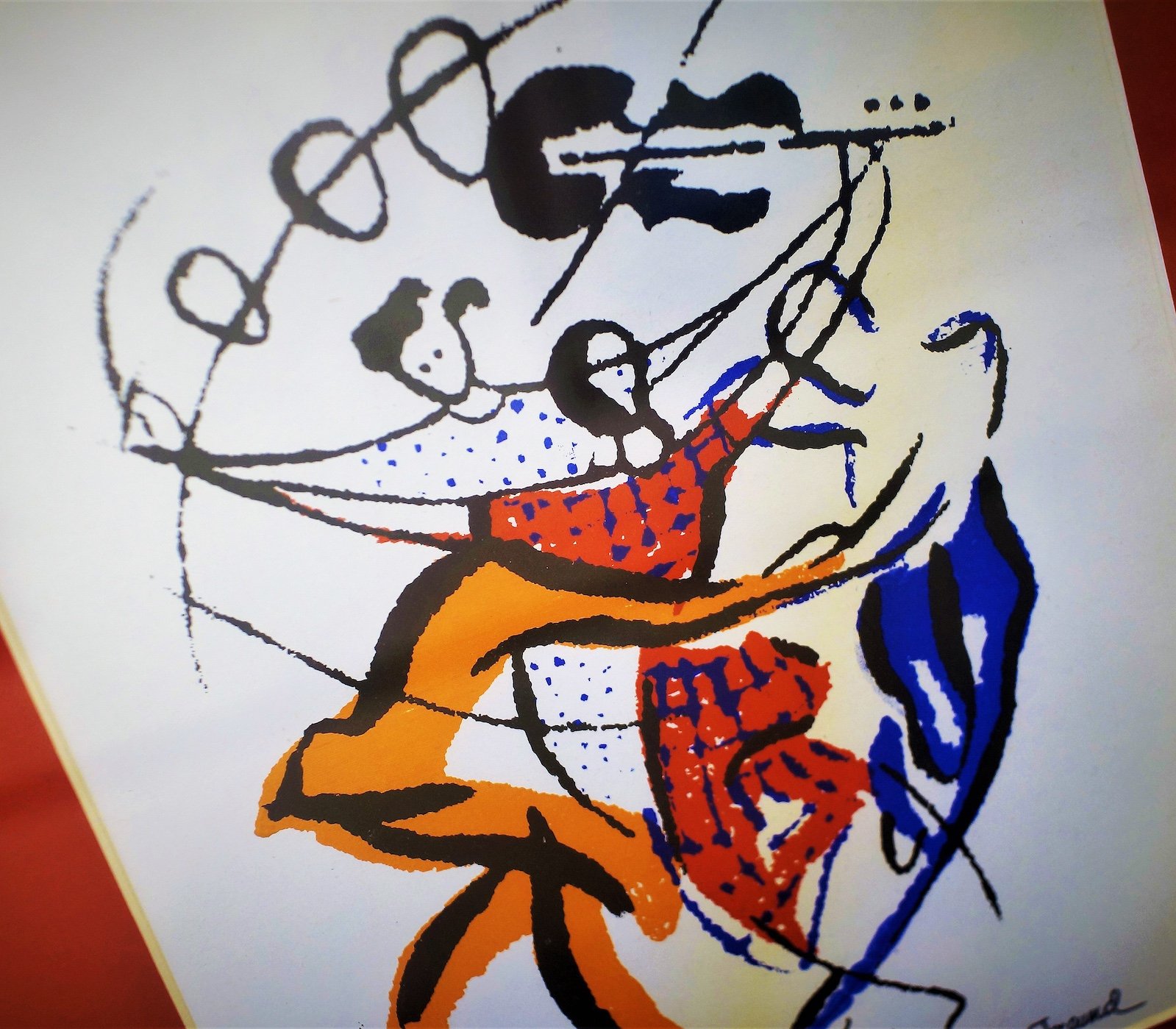
AAS: Speaking of Louis and Elsie Freund, I understand that they were quite involved with the museum and even developed a vision plan for its future. Please tell me about that.
Sketch of Louis and Elsie Freund’s vision plan for the museum, prepare by Cromwell Architects in 1993
JD: Yes, in addition to Louis spending some time on the museum board of directors, the Freunds were heavily invested in the success and development of the Eureka Springs Historical Museum. In the late 1980s, they began to develop a plan that would expand the facilities to include a full art museum, a new lobby with sculpture courts and elevator access for ADA-accessibility, plus additional second and third floor multi-use and archival storage space for our historical collections. They believed that the art and history of Eureka Springs were inseparable, and that with the museum serving as the first impression at the south entrance to downtown, this expansion would radically position our city as an important arts and history cultural destination.
In 1993, they hired Cromwell Architects of Little Rock to design the site plans and elevation drawings for this incredible expansion. Unfortunately, fundraising efforts were not successful and the Freunds did not live to see their vision for a Eureka Springs art and history museum become reality. As the current director of the museum, I truly believe in their vision and I hope to someday make it happen so that we can fully integrate the art and history of our community, expand our collections and make our facilities more accessible, and cement our future as a world-class art and heritage cultural resource site.
AAS: Tell me more about the community’s support of the Museum and community activities that help support the Museum.
JD: Since we are not city owned or operated, we are very fortunate to have a generous community of individuals and local businesses that support the museum, and help us keep the doors open and maintain our vast collection of artifacts and art. Each month, our local “Artist of the Month” works with us to bring fresh artwork for sale to the gift shop, with a portion of proceeds benefitting the museum. Our largest annual fundraiser is a series of “Voices from Eureka’s Silent City” fall cemetery tours. Each evening, attendees are guided by lantern through the cemetery and actors in period costumes portray individuals who are buried there, sharing the stories of their lives and times. We have an incredibly beautiful cemetery, and this is a fascinating opportunity for folks to see it lit at night.
AAS: I want to hear more about your artistic endeavors.
JD: Growing up, I had always been “the artist” in my family, and in high school, I took several studio art classes and four years of darkroom photography. High contrast black and white photographs that had usually been altered mid-process were my specialty. I loved the experimental results of re-exposing images after they had only been partially processed through the chemicals (i.e. solarization). I would combine this effect with other forms of processing, like metallic Halo-Chrome toner, and sometimes I would even take wet and dirty “unfixed” photos that others had discarded in the trash, and give them another round of exposure with new images, just to see what would happen. I think I was most attracted to the unexpected nature of it all, and the fact that I was creating one-of-a-kind images that couldn’t be easily duplicated. It didn’t always work out, but occasionally there were happy accidents.
In college, I planned on pursuing my fine arts degree in photography, but was introduced to the wonders of Photoshop and digital photography, and I eventually changed my concentration to digital imaging. As the internet was rapidly developing in the late-1990s, I quickly learned how to design websites and worked with several small design firms as a freelance designer. I also launched a solo music career, and started my own record label at the age of 19, working with several bands from across the globe. Like my early photography, the electronic music that I produce as Testube is quite experimental in nature, and I use a similar “off purpose” approach at composition, working with random sounds and textures until a more cohesive direction takes shape.
AAS: I really enjoy your digital art, especially the Pareidolia series and Pareidolia #6. Tell me about your digital art and that series in particular.
Pareidolia No. 6, digital drawing
JD: I haven’t had access to a darkroom for many years, so lately my artwork has become much more digital and is often vector-based. I still haven’t lost my taste for the unexpected, however, so much of my digital work begins with random placement of abstract textures, patterns, and fragments of typography until something less abstract reveals itself. I feel like I am often trying to finesse order from chaos. Pareidolia is the tendency of human beings to try and find a specific pattern or image in an abstract composition. Seeing facial features in woodgrain, car headlights that look like eyes, or pointing out figures in the clouds is something many of us do. The “man in the moon” is probably the most familiar example of this effect. With my Pareidolia series of vector-based collages, I experimented with this human desire to coerce visual meaning from abstraction, allowing face-like compositions to grow from abstract lines, textures, and type. With the way that I usually work, I’m beginning to think that pareidolia has an influence on nearly all of my visual art!
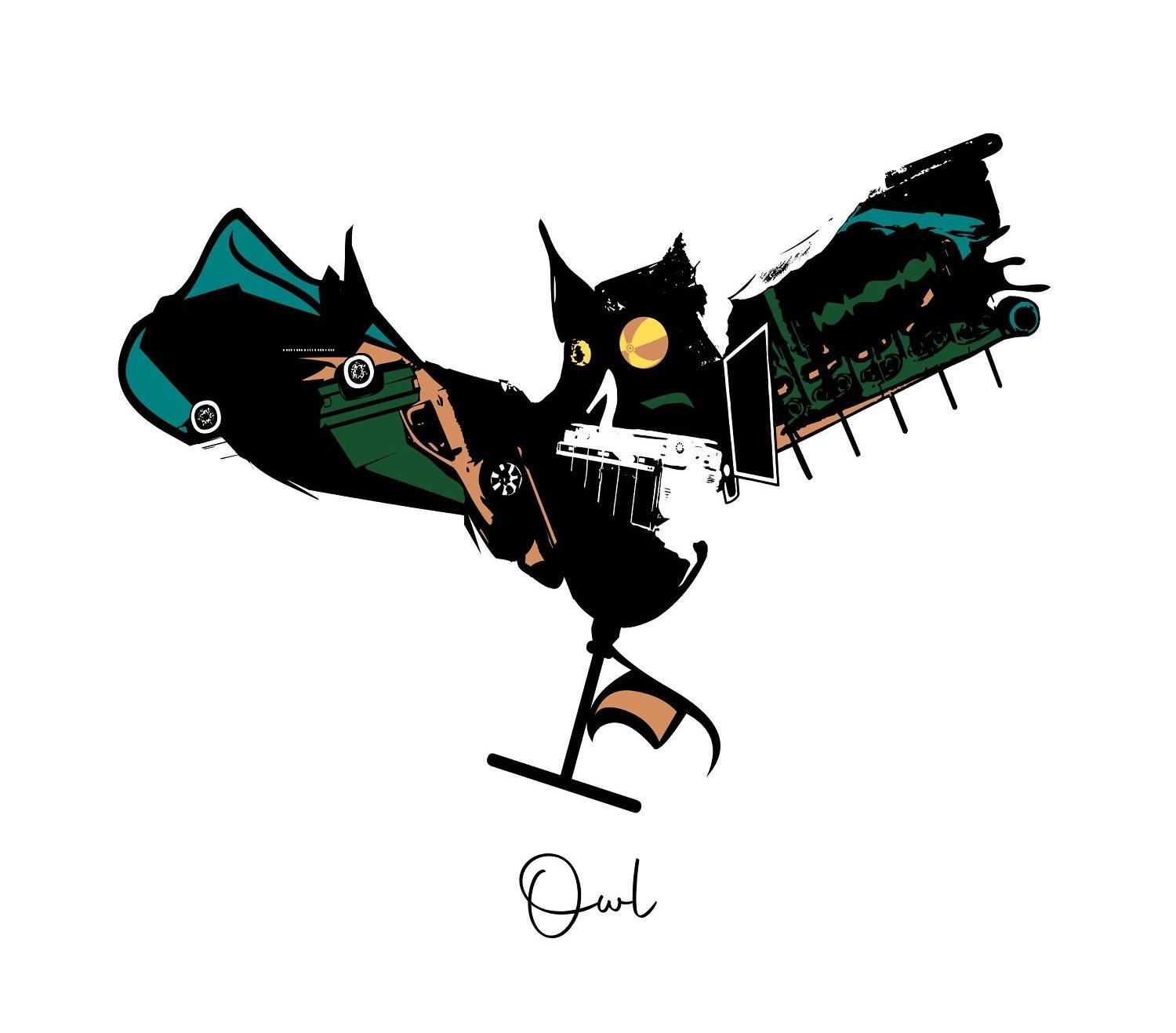
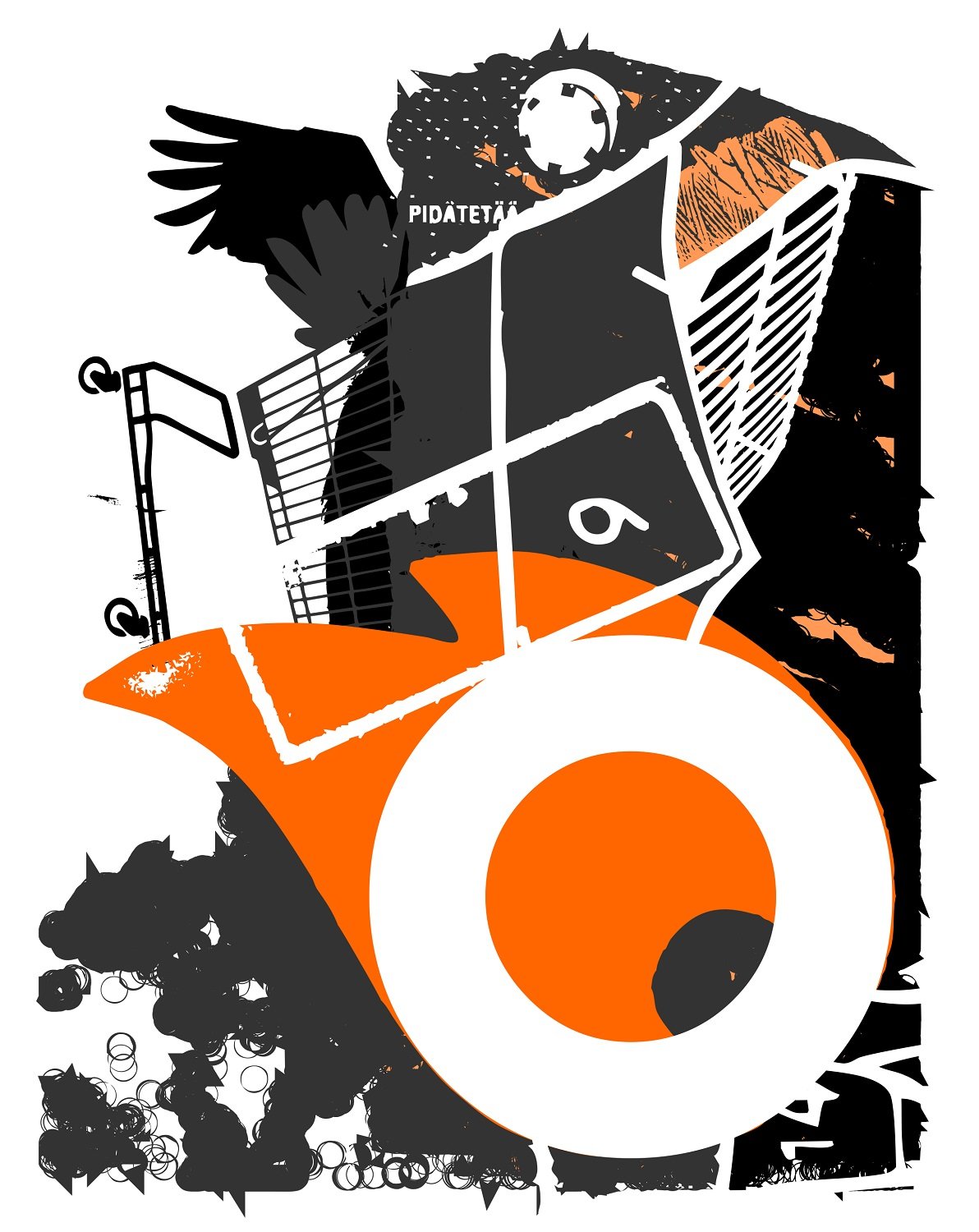

AAS: Your photography is also often about strong line and contrast and abstracted imagery. Cancersticks No.2 is one of my favorites. Tell me about it and your approach to photography.
Cancersticks No. 2, photograph
JD: That one is an example of solarization, a darkroom technique. I’ve always been drawn to high contrast images and graphic designs that have a strong balance of positive and negative space. Although I no longer work in the darkroom, I still convert many of my digital photos to black and white, and sometimes pump up the contrast. Often, it isn’t the subject matter, but the overall composition and the play of light and shadow that draws me to shoot something. I get sucked into detailed forms and textures, or ordinary objects or environments lit at unusual times of day. Sometimes it is just a delicate shadow or reflection splayed across the ceiling that you’ve seen a thousand times before, and sometimes it happens once and then it’s gone. I don’t know that I see things any differently than anyone else, but perhaps I notice things a little differently, which may prompt me to capture something in a photograph that nobody else would.
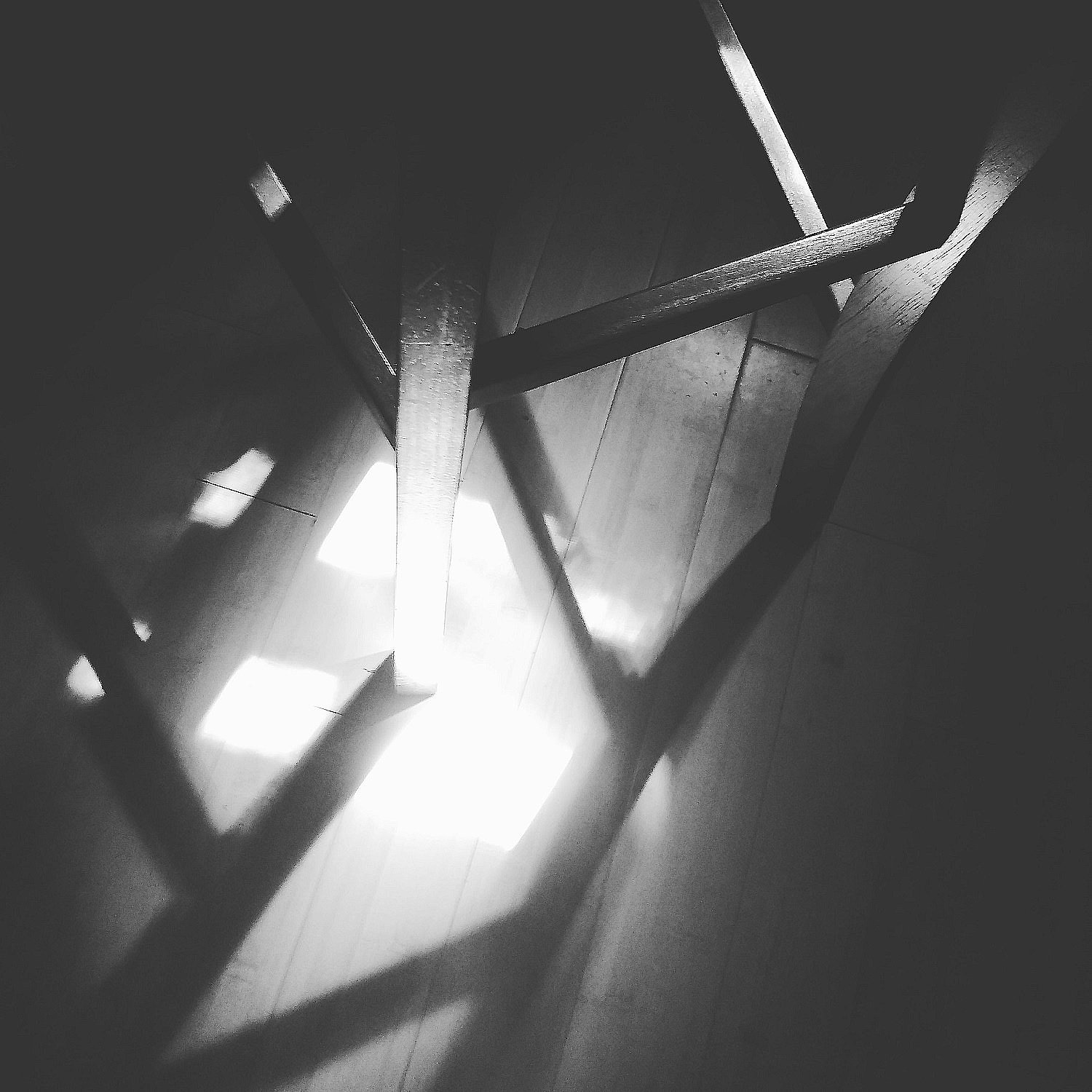
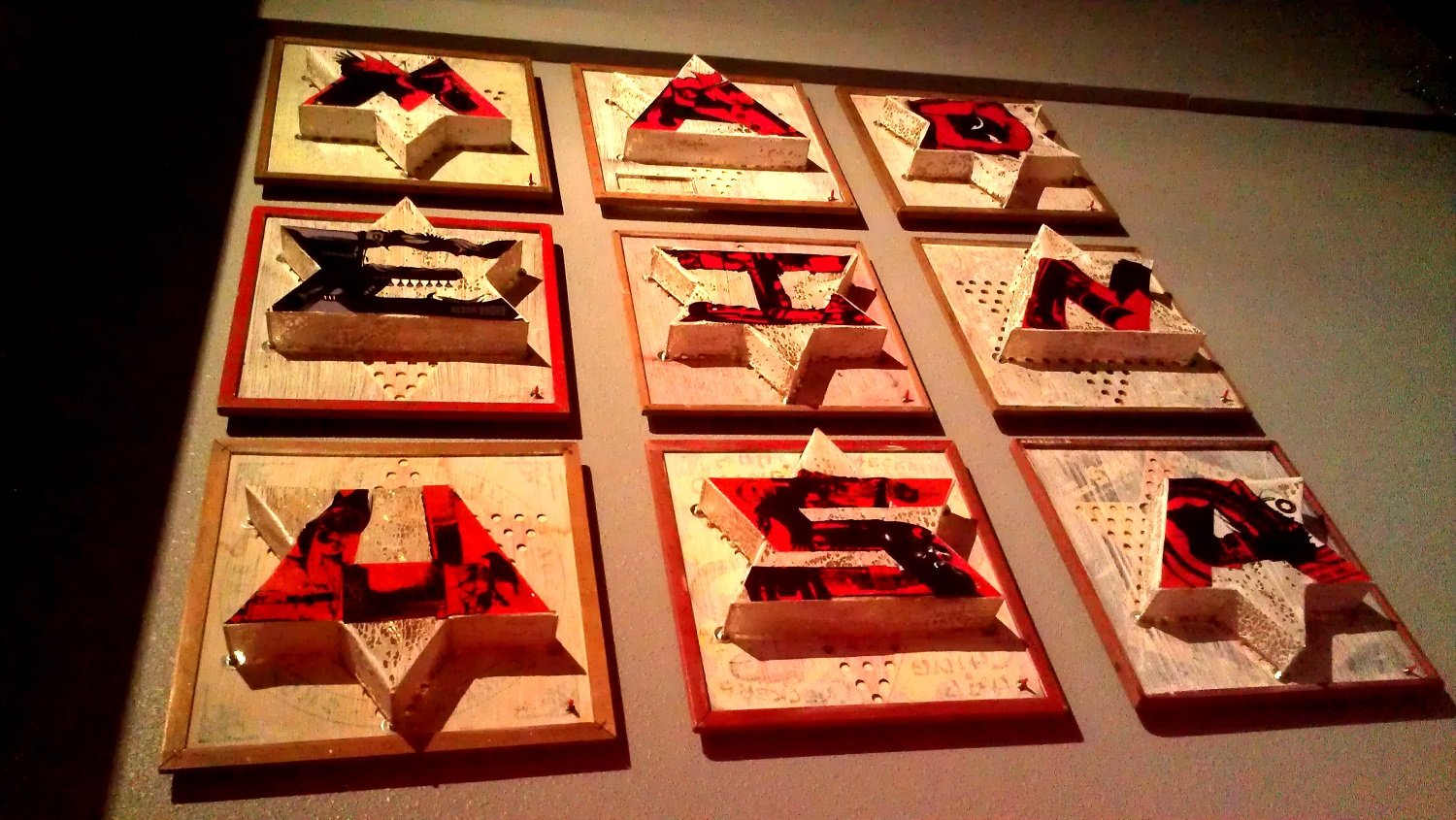
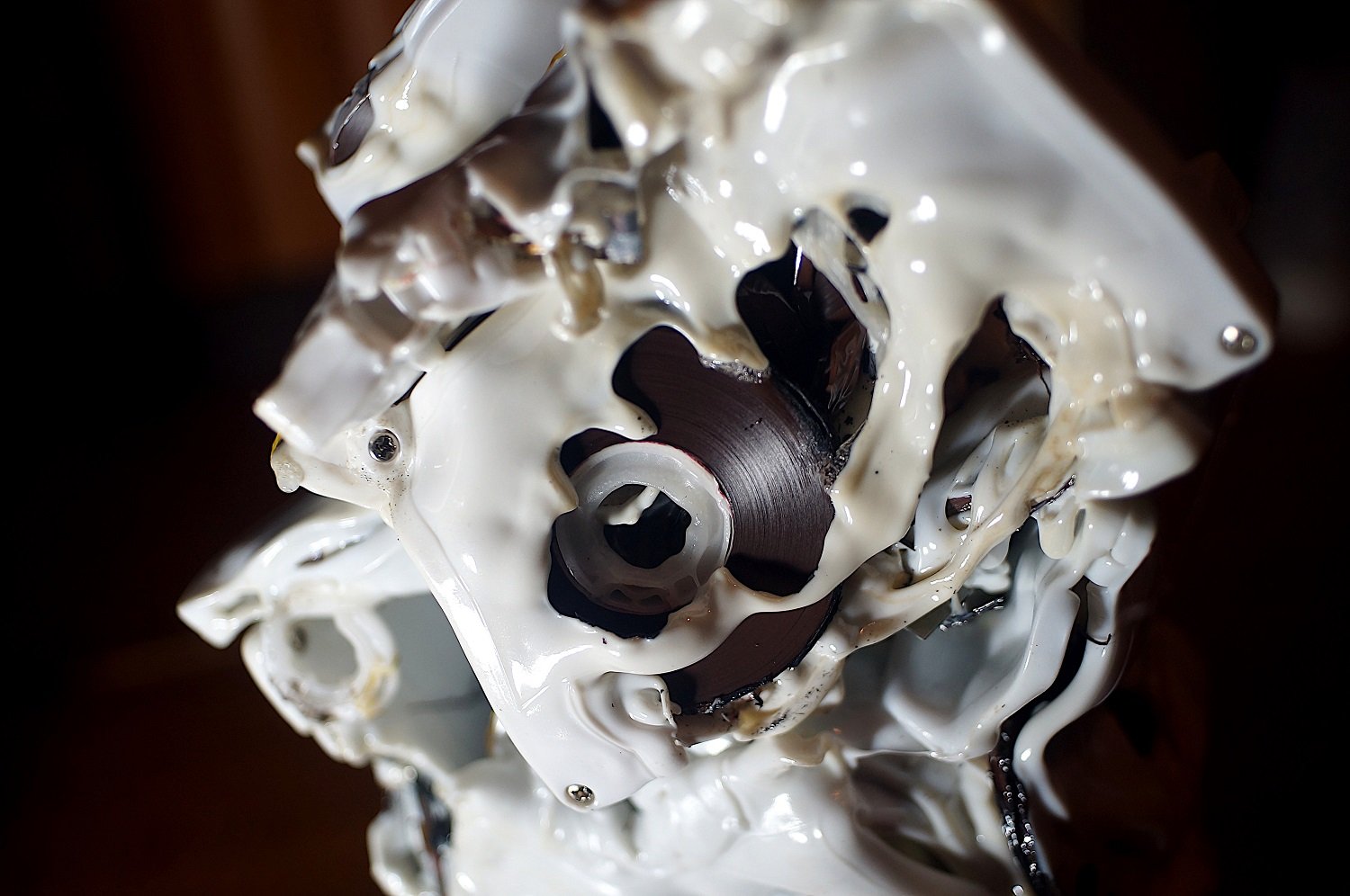
AAS: Does directing the museum give you much time to pursue your own art?
JD: As the director, I wear many hats at the museum! I’m responsible for the day-to-day operation, management of employees and volunteers, museum membership, budgeting and fundraising, facilities and collections management, exhibit curation and design, digitization and archiving, updating the website and social media content, special event planning, community outreach, and taking out the trash. We have a 12-person board of directors and a staff of three part time employees, myself included, plus a handful of regular volunteers who help keep things operational.
Although I don’t have as much time for my art and music as I would probably like, I get to put a substantial amount of design and creative production into the exhibits, multimedia, online content, and special events that we host at the museum. I’m currently working on a grant-funded redesign of our exhibit space graphics on two floors that will include larger, more accessible text and images, and I have several new interactive audio-visual exhibits that I’m developing. For our gift shop, I enjoy designing one-of-a-kind museum souvenirs, vintage throwbacks, and specially branded swag. I also recently redesigned our website with a new theme, layout, and logo. With our special event fundraisers, I have been able to infuse them with much of the same enthusiasm and immersion as the events that I used to produce on my own. It is great fun to plan and implement such creative events that include elements of cosplay, art installation, scavenger hunts, virtual time travel, historical mysteries, and thematic food, music, and dance.
I still deejay on weekends and create my personal “off purpose” art and music as I find the time, and in fact I have a new Testube album dropping this winter. But I love that my position at the museum gives me a “day job” that allows me to use so many of my skills to create and share art, solve historical mysteries like Sherlock Holmes, search for treasures like Indiana Jones, and sometimes curate order out of chaos. It’s a dream job.


